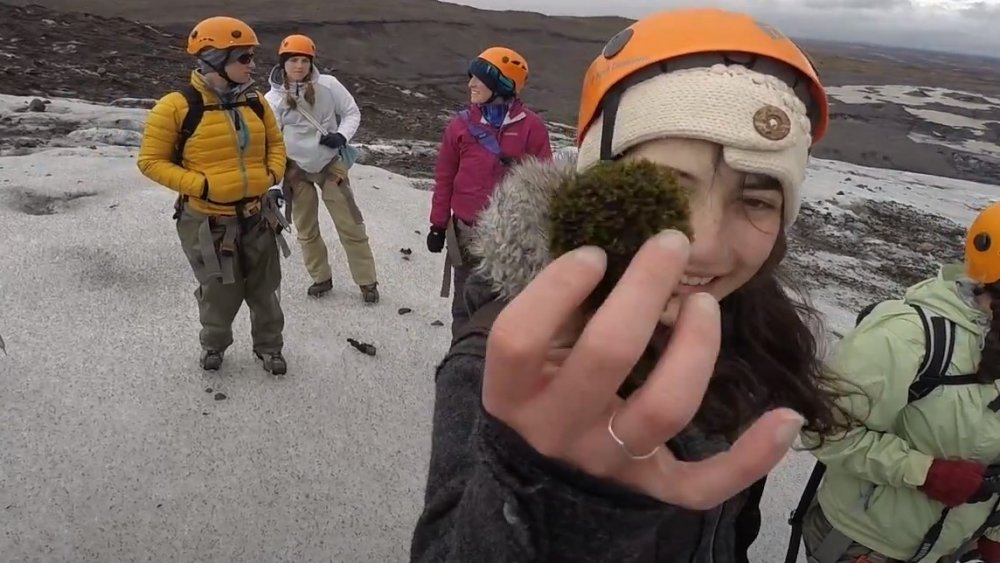The Bizarre Truth Of Fuzzy Green 'Glacier Mice'
In 1951, Icelandic researcher Jón Eythórsson described an alarming discovery. High atop the Hrutarjokull glacier, in an area otherwise free of debris, he'd found dozens of small, round, "moss-covered stones" sitting stationary in the frozen field of nothing.
If you're thinking "ugh, another internet article about rocks with moss on them," then stick around. It gets even more wild than that. He called the little darlings "jökla-mýs," or "glacier mice," and future sightings provided some fascinating insights. They're not rocks, they're piles of moss conglomerating around a particle like floral pearls and, and here's the good part — they're moving, albeit slowly. Possibly towards you when you're least expecting it, which, given the fact that they're small moss lumps, would probably be "any time."
Yes, glacier mice, despite their perceived lack of literally any body part, seem to be moving of their own volition. Adding to the strangeness are the following facts: they're doing it as a herd, it's happening on glaciers around the world, and scientists have no idea what the hell is going on.
And you should see the ones in the fjords
In a research paper titled "Rolling Stones Gather Moss," Tim Bartholomaus of the University of Idaho describes the unabashed weirdness of these bizarre things: "Glacier moss balls move an average of 2.5cm per day in herd-like fashion... Surprisingly, the dominant moss ball movement direction does not align with the prevailing wind or downslope directions, nor with the dominant direction of solar radiation."
To summarize, these oddities are moving as one across glacial surfaces, seemingly without any motivation. They aren't following the sun, or rolling slowly downhill. They're just moving.
Unfortunately, there haven't been many other studies into glacier mice, but the little we do know is fascinating. They can apparently live for years and provide miniature habitats for tiny, basic life forms like tardigrades and worms, according to NPR. As for theories about their capacity to reproduce asexually aboard space stations, and subsist entirely on quadrotriticale (ala a certain critter that Captain Kirk tangled with) ... these remain, at best, speculative.

